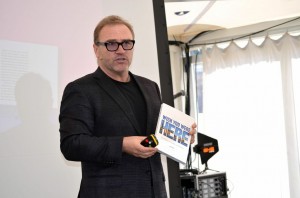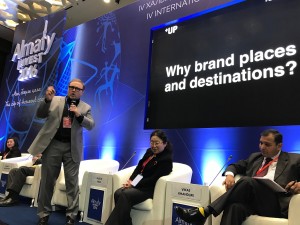Monthly Archives: January 2020
e-ployment: The future of work?
- Friday, 17 January 2020 20:26
- Written by Julian Stubbs
- 0 Comments

BREAKFAST SEMINAR: MARCH 20th | 8:00 AM | STOCKHOLM
The world of work is changing dramatically. More and more, people are looking for balance between their work and personal lives. How are companies responding? How do you manage remote work teams and measure productivity? Is there a more environmentally sustainable way?
How are companies, organisations, recruiters, work spaces and governments responding to this rapidly changing new world of work? Join us to hear from some of the thought leaders in this area.
We have three speakers:
Hear from Spotify about how they are responding to and helping shape the new world of work. Teamtailor, one of the fastest growing HR tech start ups will talk about their view of the future of work. UP THERE, EVERYWHERE, the global cloud based agency, will talk about running globally distributed remote teams, working in the cloud and more.
Our co-moderators will be Sharon Green and Jesper Ek.
The event starts at 8am and is being held at Grev Turegatan 30, Stockholm, Sweden.
More information at this link:


Place branding book: Wish You Were Here
- Tuesday, 14 January 2020 09:36
- Written by Julian Stubbs
- 0 Comments
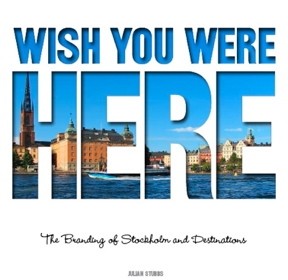
Place branding and destination marketing
Wish You Were Here, The Branding of Stockholm and Destinations, covers the key elements in developing a successful destination branding program and looks at other relevant examples from around the world, such as New York, Liverpool, Barcelona, The Ice Hotel, Hollywood and more. It examines the similarities with the branding of consumer products as well as the major differences and challenges.
Discover the essential elements that made certain places branding icons.
Wish You Were Here, The Branding of Stockholm and Destinations is a book on place branding from Julian Stubbs, a place marketing strategist.
Julian is one of the founders of UP THERE, EVERYWHERE.
Download a free chapter of the book here:
Wish You Were Here FREE chapter
See Julian Stubbs presentations on You Tube here:
Journal of Advertising Research Article on Living & Working in the Cloud.
- Sunday, 12 January 2020 05:56
- Written by Julian Stubbs
- 0 Comments
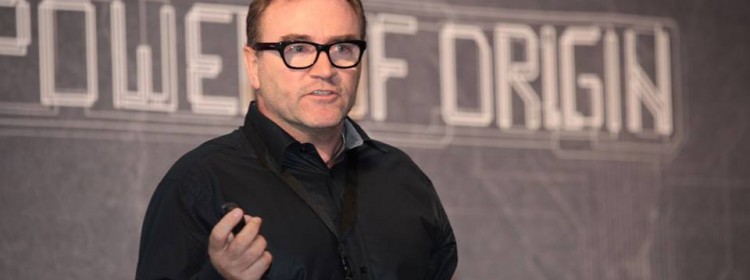
Here’s a copy of the article I wrote for The Journal of Advertising Research. It’s featured in a section called Speakers Box, and talks about the growing trend of agencies working through the cloud.
Head in the Clouds? beyond Employment in the Creative Services industry
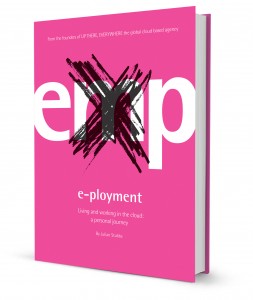
Speaker’s Box
Introduction
Julian Stubbs is founder and CEO of UP There, Everywhere, a global cloud-based consultancy group, which employs more than 150 people in 19 cities around the world. He is the author of Wish You Were Here (Create Space, 2012) which explores the branding of places and destinations, and E-Ployment The Third Way to Live and Work in the Cloud. UP There, Everywhere’s list of clients includes the city of Stockholm, for which Stubbs created the brand positioning/tag line, “Stockholm, The Capital of Scandinavia.”
In this “Speaker’s Box” offering, Stubbs argues that cloud-based agencies will become more common and that its operational tools—untraditional as they might be—offers many opportunities for marketers and research.
We all recognize the speed of change going on around us. Things seem to be converging more and more as our personal and work lives becoming ever entwined. Today, we think nothing of watching a fun viral video on YouTube at 10 a.m. or answering business e-mails at 10 p.m.
This is the picture for some of us who work in service industries. For many people, “traditional” employment is fast becoming a thing of the past. The cloud and the digital tools we have come to take for granted offer us more independence than we ever could have imagined. As more of us become self-employed, in fact, we are discover- ing that we can take control of our own lives and futures, which is exciting.
What, however, is driving this new movement away from traditional—and, presumably—success- ful business (and personal) models?
The aftershocks of the 2008–2009 financial cri- sis profoundly are affecting the way employees are viewed by the enterprises that may have pro- vided us with employment. If there is any sort of safety net, it has holes that are growing larger all the time. We are being encouraged to become more independent so that we do not cost governments so much money. Corporations are shedding us and outsourcing so that they can save money and make more for their shareholders.
So, in short, in many cases, we have little choice over whether we become independent.
With recurring economic downturns and with employment patterns shifting dramatically in our flattened global world, we need new solutions. We need to find new ways to work—to meet the ever higher productivity needs and to meet employees’ growing demand for more balanced lives.
Nowhere is this more evident than in the “trad- itional” communications-consulting sector.
I have been in the marketing consultancy and advertising business for more than 20 years. For most of that time, I have spent at least 3 hours a day in a car, commuting about 70 miles a day to and from work, where 50 other people had made similar journeys to the office by one mode of transport or another. All had consumed energy in some form, pumped out CO2, and wasted a fair amount of time and effort doing so. On a typical day, I would truly interact with no more than four or five people, and even fewer on some days. Then I would have to face the commute back again, to arrive home late—tired and not particularly happy. Something needed to change personally in my own life.
We now live in a world of digital opportunities that have had an impact on how we all live. We can buy books, music, and films, share photographs, and get news—all online. Interactivity also has affected how we stay in touch with friends (real and virtual). To date, however, so much of this has had little impact on the traditional world of
employment. The majority of people still make the slog through a daily 9-to-5 grind. Does that make sense? My colleagues and I think not. In fact, we believe that digitally driven change is about to sweep away traditional (and failing) work norms and structures. The time has come to radi- cally rethink employment practices in the advertising, design, market research, and media industries.
GOING IT ALONE
I have been self-employed and I can tell you, it is a famine-or-feast environment. Typically, you end up working around the clock, employed on a project basis by large organizations that use you and then shed you because you are, well… disposable.
Freelancers need to find work and man- age their own businesses. And, as such, they need to possess the skill set of a mini- CEO, overseeing all aspects of their busi- ness lives. It is the kind of 24/7 control that has an effect on our personal lives that need to exist around the all-out effort that goes into maintaining the business.
We also are told that the consequences of failing to get work/life balance right can have disastrous effects on our well-being and that of our families. We also know we are in danger of becoming isolated and lonely without an office and a water cooler where we can gather with colleagues who have shared interests. And, with this insight, maybe being “free” does not sound quite so liberating.
In addition, however, to the familiar 9-to-5 and the freelance patterns of work, we believe there is a third track. It is not employment as we ever have known it. And it is not freelancing.
We call it E-Ployment.
NO EMPLOYEES. NO OFFICES. JUST PEOPLE
Running a creative, strategic, or research- services agency is weighed down by two major costs: people and offices. When times get tough—as they do in increasingly regular cycles in the marketing and research business—adjusting these two items is difficult and expensive.
Imagine, however … a structure where those two costs vastly are minimized. Con- sider the most important element that cli- ents fully value—the people with whom they work—collaborating in a structured, coordinated manner, sharing common sys- tems, tools, and standards.
At our UP There, Everywhere agency, we do not have employees; we have members. Even though I am a founder of the organization, I am not an employee. We have a Leadership Team—eight people from three countries and two continents— that meets weekly by Skype. We have a business update and discuss key decisions.
Just like a traditional bricks-and-mortar organization, you cannot just join us. Over the past 3 years, we have developed strict recruitment routines, systems, and con- tracts that work for our model.
And it is not that we are stepping into the realm of crowdsourcing. In fact, we are a long way from it. Crowdsourcing is closer to outsourcing and, in our opinion, is just a shortsighted way of shedding costs that do not add long-term value to the cre- ative industries or (especially) our clients’ best interests.
Our future—the one in which we believe—is one where individuals will take responsibility for themselves, their lives, and their own employment. Such ”community organizations” will provide structure, tools, and a brand presence. People will work within teams that are globally connected and provide many aspects of the support of traditional employment… with the freedom of being an independent worker.
We accomplish all this with cloud- based productivity tools. And we believe that people will work within such global
communities that will help them win work and will invest in ever-more sophisticated tools that improve productivity and track back-office administrative tasks efficiently.
In our own case, one of the most impor- tant investments has been a customized administrative/finance system that has automated the tracking of our costs and the billings for all clients and members. It was a $250,000 investment, but it has been money well spent. And it has come out of our own cash flow, without a venture capitalist in sight. We have also invested in a system within our organization man- ages training and education—a key benefit of traditional employment—and events for socializing (a bonus in any healthy work environment).
We do not worry, however, about walls and corner offices. Look where people work today: They are in coffee shops, sophis- ticated hotel lobbies, and (when weather allows) parks. When a more formal struc- ture is important—a place to work in quiet, for example—new-style shared-work spaces are springing up everywhere.
We have found we cannot do away with meeting clients or colleagues. So we have developed “Creative Spaces”—places within existing facilities that we share with other independent creatives. The shared facilities are spots where people can go work, meet clients, mix with their colleagues, or just hang out.
And, no, we have not skipped out on some of the creative comforts: These com- munal facilities have both printers, Wi-Fi, and café lattés and presentation rooms, sofas, and kitchens. It is everything we need but only when we need it. And it comes at a only fraction of the cost of a traditional office.
We do not pressure people, however, to use the space. In fact, we even encourage everyone in our organization not to come into the office. It is nonproductive—and a waste.
So how does a cloud-based agency work? What is different about it and what does it share in common with more struc- tured enterprises? To be honest, the jobs people do are pretty similar, but that is not the point: The critical difference comes with where they work from and the teams they work with.
For instance: One account director drives each project and assembles a team that could be based in Europe, the United States, and even Asia. Geography is a mat- ter of convenience, not skill. The people who are based closest to the client will serve on the account team, but there is no limit to the rest of the organization: A mar- ket researcher in Asia might be directing the work of an insights team in America that is working with copywriters and art directors throughout Europe.
The tools each project team uses for pro- ject management, communication, and sharing files are cloud-based. Most are standardized; only few demand bespoke treatment. Many projects progress 24/7 and are moved backward and forward over time zones as teams work on them.
One essential lesson: What we have found is that team members really need to
know and trust one another. So we bring them together physically as often as we can. There may be no direct business need for such meetings; they may be occasioned by no more than just the chance to put a face to a name.
By and large, however, we are on our own. Some people ask me if I ever feel isolated working this way. I tell them that I constantly feel surrounded and in touch with my team members. And, when the need arises, at one point of another during an assignment, the entire team gets together with our clients or in our Creative Spaces.
This revolution in work is a disruptive model that, we believe, will spread rap- idly and do for service sector employment what Amazon did to book retailing. It is a revolution that is already happening all around us.
At our firm, we have been working this way for more than 3 years, and we have seen other companies working in similar community-based organizations—most domestically, a few internationally. The model, we have discovered, allows for rapid expansion. In our own case, we started with just two individuals seeking a
new way of balancing their work and life. Today we have 150 people working under one global brand and organization. And, if it works well with 100… why not 500 or 1,000?
Will all clients want to work this way with their marketing-service suppliers? No. Will every person want to work on the inside of a creative or marketing organ- ization based in the cloud? No, but an increasing number do already, and that number will grow rapidly. We believe the world of work in the creative service, mar- ket research, and design industries will change radically to meet today’s changed economic realities.
It is not something to fear but something to embrace. And we cannot wait for it to happen.
Julian Stubbs is a brand strategist, writer, and presenter based in stockholm. He has worked with developing brand strategies and identities for a wide range of organizations and places—from Technicolor, the Hollywood movie company, to the nobel Peace Prize Concert, to the city of stockholm in sweden. stubbs currently works with a number of place branding projects at city and municipality levels and lectures on the subject of place branding.
June edition of The Journal of Advertising Research
e-ployment: The Future of Work. Breakfast seminar
Join this business breakfast seminar e-ployment: The Future of Work, March 20th 2020, Stockholm. Speakers at this special event will be Spotify, Teamtailor and UP THERE; EVERYWHERE talking about the future of work. More details here.
DOWNLOAD A SAMPLE OF OUR BOOK E-PLOYMENT HERE:
http://www.upthereeverywhere.com/e-ployment-book/
http://www.upthereeverywhere.com/e-ployment-book/

What is e-ployment?
- Monday, 06 January 2020 11:28
- Written by Julian Stubbs
- 0 Comments

It’s not employment. It’s not freelancing. It’s something else.
e-ployment is new way of working in the cloud that uses the advantages offered by modern digital technology combined with a growing entrepreneurial spirit around the world. It combines the benefits of self-employment with the advantages of working as part of a team in a real company. You get the best of both worlds, as the saying goes.

